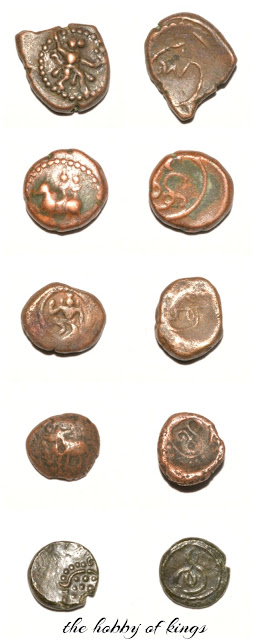Shri
(Devanagari: श्री), also transliterated
as Sree, Shri, Sri, Shree, Si or Seri is a word of Sanskrit origin, used in the
Indian subcontinent as a polite form of address in written and spoken language,
or as a title of veneration for deities (usually translated as "Holy").
Following
are some of the sri legend coins of South India:









